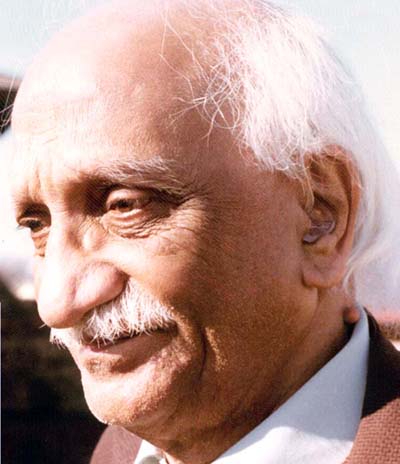home | the poems
| the plays | research
| the poet KNS | his works
| contact
Kurichi Narayanaiyer Sundaresan (KNS) (1899 - 1983) was a gifted, inspired and prolific writer of poems and plays in English and Tamil from 1920 until his death at age 84. His early work was in English inspired by Shakespeare and Tagore; he wrote scores of plays (mostly historical fiction) and poems. In early 1930's he entirely switched to writing in Tamil after a meeting with C.F. Andrews who spurred him to write in his native tongue, pointing out that Tagore's contribution to Bengali literature was even greater than to English literature. KNS worked as a teacher and Professor of Mathematics from 1921 to 1967 in Berhampur (now in Orissa). He was an outstanding teacher. But his first love was poetry; at a very young age he had decided to become a poet. He was a gold-medalist in M.A. (Math) from St. Joseph's College, Tiruchirappalli. Yet he had to leave his native Tamil Nadu to seek his livelihood because of the 'communal G.O' of Madras Presidency in 1920's [1].
In his Foreword to an earlier book by KNS (reproduced in this volume), Prof. P.S. Sundaram has highlighted the unique character of KNS's poems. I will therefore dwell less with the poems and the plays themselves and more about the man and his life as a poet and playwright. I have opted to relegate some peripheral, nevertheless interesting bits of information to the Notes at the end to facilitate free flow of my narrative. However, I urge the readers the read the Notes as well. After reading about my father's style of exposition of poetry (see later under Syntax edition), I realize that the format I have adopted helps clarity in exposition. KNS believed in an Almighty God but hated rituals. He prayed fervently and frequently, reveling in recitation of Thevaram in his own inimitable musical style. On festive occasions like Saraswathi Puja, he would gather the entire family around him and recite poems in praise of Saraswathi, the goddess of learning. KNS was a rationalist. In his historical plays of Tamil saints he eschewed miracles that are part of the traditional mythology and sometimes substituted a rationalist alternative scenario to the 'miracle'. As a youth he broke tradition, not only by discarding the Kudimi (a long tuft of hair, a religious symbol), but also by sporting a moustache. He also discarded his Poonul, the sacred thread, a symbol of his Brahmin caste.
My parents had only five surviving children. Between me and my younger sister Selvi, they lost three children - all sons - two of them within days of their birth. The normal custom at the time was delivering babies at home supervised by the grandmother. But, when my mother was pregnant with Selvi in 1938, she was admitted in a hospital several weeks before the expected delivery, for 'intensive care'. Selvi was a healthy baby (8 lb 14 oz). KNS was a fascinated witness to the day-to-day growth of a baby at home, after a gap of eight years. His sensitive nature, keen observation and innate flair for poetry spurred him to pen 100 'children's poems' in the next two years (1938-1940). This anthology Thennanthoppu (Coconut Grove) is his first major work in Tamil poetry. KNS's approach to writing was methodical and systematic. When an idea occurred to him for a play or a poem, he would immediately prepare extensive notes on the theme, characters etc, to be used at a much later date if needed. In 1930's he made notes for about 200 historical plays based on Sangam literature. He wrote only a few at the time, which were published in Tamizh Pozhil, a magazine devoted to classical Tamil. But his interests grew diverse and he wrote in English (plays, short stories and poems) until late 1930's. When he switched to writing Tamil poetry, he chose contemporary themes. He was deeply interested in contemporary Tamil and Tamil society. He subscribed to several popular Tamil magazines such as Ananda Vikatan, Kalaimagal, Kaveri (later Kalki) and elite literary magazines such as Tamizh Pozhil, Manikkodi. These served as invaluable windows on the life and culture of Tamils in Tamil Nadu about 1000 miles away from his home in Orissa. At the end of a year, he would strip the magazines of stories and serial novels and bind them into separate volumes. In 1982 KNS wanted to return to his project of historical fictional novels based in the Sangam period, for which he had made notes 50 years earlier. At the time he was living with my brother Srinivasan (Seenu) in the U.S.A. Soon, I was visiting U.S.A and carried the notes with me and delivered them to him. In a period of about six months, he completed writing more than 60 plays - averaging a play of about 50 to 60 pages every three days! In contrast to his earlier plays, the new plays had a liberal sprinkling of poems. He wrote many plays while living with me in the U.S. He insisted that I read them. I was struck by what seemed to be a remarkably authentic portrayal of life of the people in the Sangam period. I have never read the classics themselves, but I can believe that KNS, with his decades of immersion in the study of the literature of the period, was able to transport himself mentally to the Sangam period in writing the plays. There was only one draft manuscript. The final version was in three copies (original plus two carbon copies) transcribed on computer stationery printed on one side. Writing with ball pens to produce two legible carbon copies was indeed strenuous. His fluency in poetry was no less. In a single night he would pen a poem of 200 - 300 lines. In later years, his poems grew longer, some about 700 - 800 lines long. It seemed that he could write poetry faster than prose. For example, seven of the nine poems appearing in the Tamil Section of this book were written in a period of 30 days in February-March 1948. They are culled from his book Irubadhu Nal (Twenty days) that had 20 poems all written in the same period. There was euphoria in the country following Independence (15 Aug 1947) and the daily newspaper provided the themes for these poems. This collection is truly remarkable since it was written just a month after two tragedies in his life: the death of his youngest two-year old child Parvatharani (8 Jan 1948) and the assassination of Mahatma Gandhi (30 Jan 1948). An interesting aspect of his writing is that after completing a poem to his satisfaction, he would move quickly to the next, putting off any further revision to a much later date. Periodically he would systematically document the details of his works, such as dates of conception, completion of the poem, annotations and the number of lines, stanzas etc. There are many instances of revision of poems many years after they were first written. His manuscripts are so complete that they are "printer-ready". Although KNS evinced little interest in music - classical or modern, Indian or Western - he had an ear for melody and rhythm [5]. In his poems, he experimented with stanzas of different size and format, but each stanza conformed to the rules of rhyme and prosody. Every poem had a distinctive layout of stanzas dictated by the theme. An eminent Tamil scholar Professor V. Perumal reviewed one of his books in a popular English daily. Prof. Perumal emphasized that the poems had the rhythmic pattern ideally suited for concerts in song and dance. The poem Sudhandhira Thirunal (The Independence Day) celebrating India's independence is set to the tune of the popular Kirthanai of Arunachala Kavi in Rama Natakam celebrating the coronation of Lord Rama. As an expositor of mathematics to college students, KNS had few equals. He displayed the same kind of panache in his discourses on Tamil classics, gripping the attention of his listeners. Occasionally he talked about his poems, winning many admirers. Many friends suggested that his commentaries would be a boon to students of Tamil if they were published. He steadfastly resisted the idea maintaining that he had time only for his original writing. But in a curious twist of his evolution as a writer in later years, his most enduring contribution to Tamil is perhaps the innovative and ingenious scheme of parsing texts which "greatly facilitate quick comprehension of even the most complicated lines couched in prosodic content" by delineating the text in multiple hierarchical levels in a picturesque format. The concept and the scheme are lucidly explained with illustration in this book - please see under Syntax Edition of Tamil Classical Poetry). He annotated 50,000 lines of classical Tamil poetry and they are in a state ready for publication. Prof. P.S. Sundaram's Foreword described KNS's unorthodox use of words: "some of the wanton angularities of his poetry", "use of whatever words he feels like using", "never afraid of defying use or wont". The four English plays presented here have many examples of such words. The Tamil poems too are full of unorthodox usage of words. KNS indeed fully exploited his right to poetic license in coining new words [6]. KNS collected numerous books on Tamil classics, including commentaries by scholars. They are all preserved in a library in his home in Keezh-Kar-Kandar-Kottai near Tiruchirappalli. Most of them are rare, out-of-print editions. Despite his modest salary, books were never considered a luxury or an extravagance. But the most interesting item in his collection is a Tamil typewriter. He acquired it from Germany in 1937, two years before the start of World War II. The manufacturer Bijou had claimed that they would produce a typewriter in any language whose alphabet can be accommodated on the standard English keyboard. Tamil was the only Indian language for which this was possible because of its compact alphabet. The keyboard design had some unique and ingenious features. Yet there were lacunae; many characters were missing. KNS got nine new keys specially made to accommodate them, but had to sacrifice all numerals except 6 and 9. For other numerals he used equivalent Tamil characters [7]. I learnt typing at age 12 at the urging of my father. A year later (1943) I learnt to type in Tamil in blind touch. I had to devise my own practice lessons. I have typed hundreds of pages of Tamil text. The typewriter cost Rs. 219 including the cost of the 9 extra keys (Rs. 13.50) and freight (Rs. 5.50). It was delivered on 19 January 1937. Although KNS could ill afford the expense, he never doubted that he wanted it, after he saw a news item in the Hindu about the typewriter. The typewriter is a treasured family heirloom.
Thaial (alias Thailammal) was a pragmatic woman with uncanny common sense [8]. She skillfully managed the household never grudging my father's 'extravagance' on books, magazines and the typewriter. She was deeply affected by a financial disaster in 1938. My father lost all his life's savings in the crash of a bank in Trivandrum. Never savvy with financial matters, he had invested in the shares of the bank; he not only lost his money, but also was asked to pay other depositors! But KNS remained stoic and unmoved by the debacle [9]. In later years, when he was frustrated in his search for publishers of his books, he began publishing at his own expense. For KNS, Gandhi was the icon. He wrote extensively about Gandhi. He also tried some of Gandhi's methods at home, with some success. My father would go on fast (satyagraha), when he disapproved of some act of his children. Our mother would plead with the offender to apologize so that my father could be persuaded to break the fast [10]. If he had not decided to dedicate his life to Tamil, KNS could have become a gifted mathematician. He taught with gusto and enthusiasm infusing in his students a love for mathematics [11]. Three generations of students recall his lectures with nostalgia. Nevertheless, he deliberately distanced himself from mathematics, to avoid being lured into it, away from Tamil. As a poet, he could not however, resist an urge to write poems with mathematical themes. Two such poems appear in this collection (Math in Matrimony). The best of his effusions on mathematics - "Calculus and Narasimha Avataram" is unfortunately not available. But my brother Rangan (Andy Sundaresan) has succinctly presented the central idea. [12] In his early days as a mathematics teacher he was asked to set question papers for high school students. One such paper aroused confusion and consternation among the students because he had introduced pure Tamil names in the questions: instead of Rama and Krishna, it was Sokkan and Murugan. This made no difference to the problem itself, but the unfamiliarity of the names confounded the students. KNS adopted innovative methods of teaching. One example: the problem was to divide Rs. 200 between A and B so that A gets Rs. 60 more than B. Normally the solution would begin "let x be the amount received by B . . ." But KNS's solution was: Pay first the 'extra' Rs. 60 to A and then divide the balance (Rs. 140) equally between A and B. When he quizzed his mother-in-law (my grandmother) with the problem, she gave the same solution! But as my father related the story to me, he first mentioned my grandmother's solution and added, as an aside, "I too figured it out". Once, I mentioned to KNS a remarkable mathematical puzzle whose answer was the 10-digit number 3 8 1 6 5 4 7 2 9 0. He was fascinated by the puzzle and took considerable time to solve the puzzle himself. But he managed to write a love poem based on the puzzle, even detailing some of the steps in the solution [13]. KNS had charted a clear vision of what he
wanted to achieve in life and estimated that a life span of "1000
moons" (about 81 years) may not be enough. Like Gandhi he too
expressed a desire to live a 100 years. On 12 October 1943, he wrote
a note of self-exhortation and displayed it prominently on his desk.
It was a clarion call to KNS urging him (a) to sleep only 5 ½
hours a day (midnight to 5-30 A.M) (b) to try writing two poems
a day (c) to value quality more than quantity of work (d) not to
compromise on his responsibilities to his profession, family and
friends and above all (e) to remember "Man is greater than
the Writer". His immediate target was "800 love poems,
200 plays" and it is not surprising to glean a sense of urgency
in his words. As it turned out, KNS lived only about 1000 moons and was writing until he lapsed into a coma a few days before his death on 17 March 1983 in Dallas, U.S.A. The historical fictional plays of the Sangam panorama were completed only a few months before his death. He lived a healthy life; he used to say with some pride that he did n't know what it felt like to have a headache! However, from early age he had hearing loss, which progressively grew worse and severely restricted his communication with his own family and people around him. It was an irony of fate that he was felled by a rare virus disease (most likely pancreatitis) which resulted in a coma from which he never recovered. He seemed to have some premonition of death and more significantly a sense of satisfaction of his achievements. Shortly before his death, he had completed detailed instructions for the publication of his works in dozens of books, each book complete with contents and the name of the person to whom the book is dedicated (including a poem of dedication). A dozen books - mostly of love poems - are already published. Credit for this belongs to my late sister India Devi (Vindhiya) and her husband late V. Subrahmanyan. At the peak of her eminence as a writer of 100 Tamil short stories, India Devi stopped writing at age 33. But she took upon herself publication of our father's works as one of her missions in life. The unpublished love poems are in digitized form ready for printing. My brother Andy (Rangan) Sundaresan has distinguished himself as a translator. His English translations of short stories by the eminent Tamil writer Jayakanthan have appeared in three volumes. His last publication - Cupid's Alarms (April 2007) - is a translation of some of the stories by Vindhiya. For this latest book of a sampling of our father's works, Andy had to first collect the widely scattered source material both in Tamil and English, transcribe them in digital form, annotate the selections, have the illustrations done, all challenging tasks. The most difficult part was the selection of a very small subset from the prodigious output of KNS, as a representative cross-section of the wide variety of genres he had embraced in his work. As it was in the case of Cupid's Alarms, for the present book too, Andy succeeded in making the publishing effort a family enterprise, by enlisting the active help of his two brothers and sister, all senior citizens today. In Dallas, my youngest brother Seenu and his family were privileged to have our father living with them in his last days. Seenu has sent me an excerpt from one of KNS's poems (1981), which aptly describes his life. It read: "Oh God, grant me a lotus leaf to make my living days a sparkle. Even when the size of the water-pearl dwindles, it retains its lustre. So for me, let it be all my life, like a pearl at my death". S. Naranan
NOTES [1] According to a new directive (G.O. No: 613) in 1921, the major chunk of 44 percent of jobs were reserved for non-Brahmins, 16 percent for Brahmins, 16 percent for Muslims, 16 percent for Anglo-Indians and Christians, and eight percent for the Scheduled Castes. Soon after KNS took up his job in Khallikote College, Berhampur, he discovered to his discomfiture, that he had stepped into the shoes of one who gave up his job in response to the call of 'non co-operation' in the national movement of freedom struggle. [2] Kalithogai is an anthology of poems not merely of royalty, but also of common folk -shepherds, farmers, and fishermen - the dominant theme being 'love'. [3] Thevaram is the poetical work of the famous Trinity of Tamil saints - Sambandhar, Appar and Sundarar - in praise of Lord Shiva. Written in the 7th century, it was catalogued only in the 10th century. In contrast, Sangam literature (Circa 0 - 300 A.D) among the earliest known Tamil literary works is mostly secular and non-religious. [4] India Devi was a distinguished writer of Tamil short stories in the years 1947 - 1960. An English translation of some of her best stories written under the pseudonym Vindhiya, by my brother Andy Sundaresan was published on her 80th birth anniversary in April 2007 (Cupid's Alarms). The name 'India Devi' aroused consternation among some; KNS was outraged when the officiating priest at her wedding suggested that the occasion is a good opportunity to change her name from India Devi to Indira Devi. [5] Nevertheless he arranged training in Carnatic vocal music and violin for his two daughters at considerable expense in Berhampur, where the musical tradition had few followers. [6] Shakespeare (1564 - 1616) coined about 2500 new words, about 8 % of his total vocabulary of 31,534 words, more than half of the extant English words at the time he wrote the plays. Shakespeare's total output was 884,647 words. Most of his inventions are household names (e.g. road, hurry, critic, bedroom, generous) including the word household. [7] Tamil character equivalents for numerals are: 1 = k, 2 = u, 3 = ng, 4 = c, 5 = ru, 7 = e, 8 = a. For 6 and 9, the Tamil characters were not part of the alphabet, so the original 6 and 9 were retained. [8] This little episode drives home the point: As a child of 8, I was apprehensive of being late for school and insisted on starting too early from home to walk to the school which was only 10 minutes away. My mother hit upon an ingenious plan. She knew that the school watchman would go past our home every morning to the school. She requested the watchman to take me along with him. I felt assured I will not be late since the school started only after the watchman rang the bell. [9] It is said that he remarked: "I put my surplus money in the bank because I did not need it. Even now, I don't have the need for it". Only later when his responsibilities as a parent became more demanding, at a time of high cost of living (World War II years 1939-1945), did he feel the impact of his financial losses. [10] I recall the time when my father left for college without eating. I walked all the way to the college to apologize to him. [11] His favorite subject was Analytic Geometry - the marriage of Algebra and Geometry - or Algebraic Geometry. [12] Regarding Mathematics vs. Poetry, I recall a remark attributed to David Hilbert, a famous mathematician of the 19th and 20th centuries. When told that a mathematician had left the university to become a poet, Hilbert's reported response was: "I did not think he had enough imagination to be a mathematician". [13] The puzzle is the following: Find a 10-digit number with all the digits 0,1,2... 9 occurring once each with the following properties. The 10-digit number is divisible by 10. Drop the last digit and the remaining 9-digit number is divisible by 9. Drop the last digit again and the remaining 8-digit number is divisible by 8. Continue until only the first digit remains, which is trivially divisible by 1. The solution: 3 8 1 6 5 4 7 2 9 0 is unique and I believe it is the most beautiful 10-digit number.
|
||
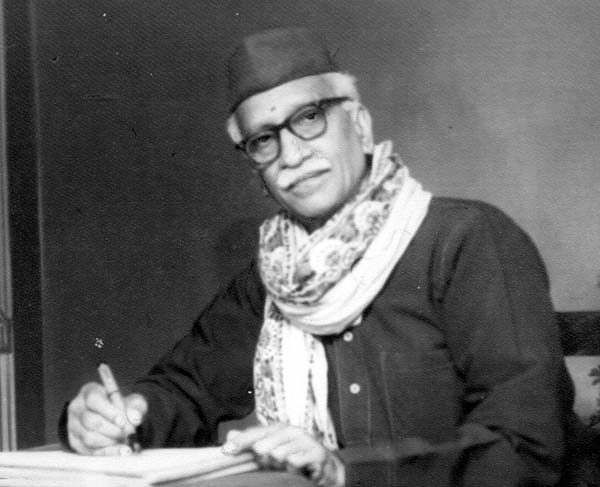
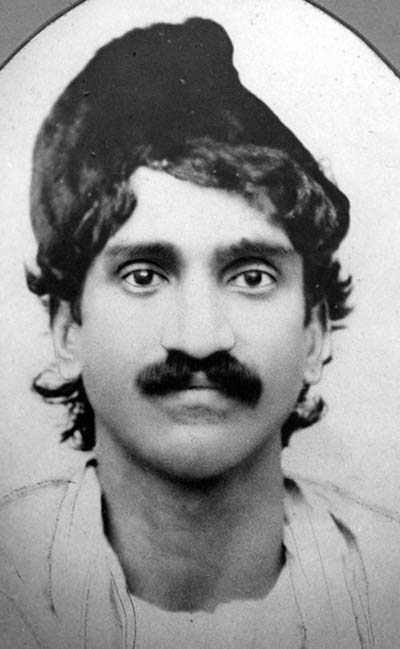 As
a student of Sanskrit, KNS had no formal education in Tamil. But
he mastered Tamil classics (especially the Sangam literature, devotional
poems of Tamil Saints) with the help of scholarly annotated English
commentaries by European missionaries like Rev. G.U. Pope. KNS wrote
more than 1000 poems and more than hundred plays. The model for
his poetry was Kalithogai of the Sangam period [2]. He described
his poems as "Sangam poetry clothed in modern raiment";
as in Kalithogai, his heroes and heroines too were common folk.
He admired the classic devotional poems such as Thevaram [3], but
never wrote any devotional poetry. His dedication to Tamil was complete
and he had no time for Sanskrit. In his later years, however he
felt that he would have benefited by Sanskrit studies. Most of his
Tamil poetry, in particular in the genre of 'love poems' (a la Kalithogai),
has been published in a dozen books.
As
a student of Sanskrit, KNS had no formal education in Tamil. But
he mastered Tamil classics (especially the Sangam literature, devotional
poems of Tamil Saints) with the help of scholarly annotated English
commentaries by European missionaries like Rev. G.U. Pope. KNS wrote
more than 1000 poems and more than hundred plays. The model for
his poetry was Kalithogai of the Sangam period [2]. He described
his poems as "Sangam poetry clothed in modern raiment";
as in Kalithogai, his heroes and heroines too were common folk.
He admired the classic devotional poems such as Thevaram [3], but
never wrote any devotional poetry. His dedication to Tamil was complete
and he had no time for Sanskrit. In his later years, however he
felt that he would have benefited by Sanskrit studies. Most of his
Tamil poetry, in particular in the genre of 'love poems' (a la Kalithogai),
has been published in a dozen books. 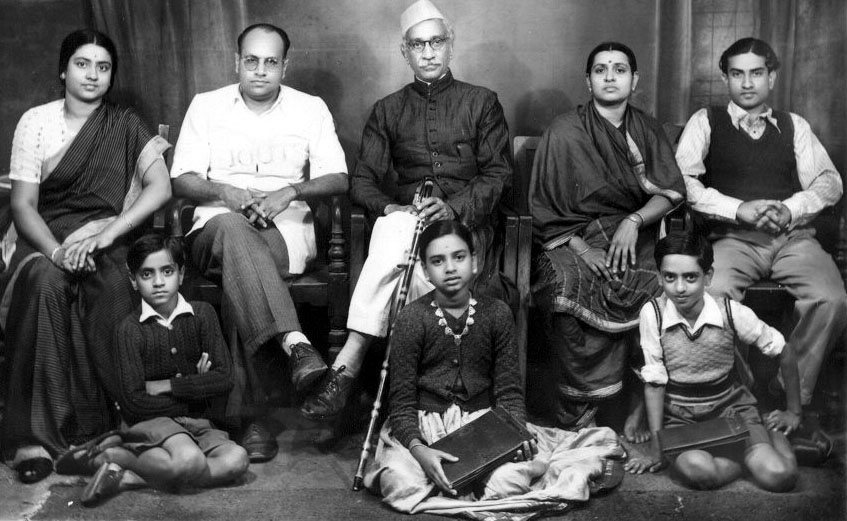 KNS
gave innovative names to his children. As a nationalist inspired
ideologically by the freedom struggle led by Mahatma Gandhi in 1920's,
he named his eldest child India Devi (1927-1999) [4]. I was the
second child, named Naranan, a Tamil variant of his father's name
Narayanan, inspired by the great devotional literature of Thiruppavai,
in which Lord Vishnu is called Naranan. My younger sister was named
Alarmel Selvi, in memory of KNS's mother Alamelu and foster-mother
Sellam who brought him up from age 7 when he lost both his parents.
KNS suggested the name Venil for his granddaughter and was deeply
touched when I accepted the suggestion. When he wished to name his
youngest daughter Parvatharani there was some debate in the family,
which at times turned acrimonious. The short story in this book,
Peyar Chandai is the only one he ever wrote; it faithfully narrates
the episode. KNS adopted several pen names as an author - Azhagan,
Sokkan, Kurinji Azhagan. For the names of the characters in his
poems, he compiled long list of Tamil names and rarely repeated
the same name in his poems.
KNS
gave innovative names to his children. As a nationalist inspired
ideologically by the freedom struggle led by Mahatma Gandhi in 1920's,
he named his eldest child India Devi (1927-1999) [4]. I was the
second child, named Naranan, a Tamil variant of his father's name
Narayanan, inspired by the great devotional literature of Thiruppavai,
in which Lord Vishnu is called Naranan. My younger sister was named
Alarmel Selvi, in memory of KNS's mother Alamelu and foster-mother
Sellam who brought him up from age 7 when he lost both his parents.
KNS suggested the name Venil for his granddaughter and was deeply
touched when I accepted the suggestion. When he wished to name his
youngest daughter Parvatharani there was some debate in the family,
which at times turned acrimonious. The short story in this book,
Peyar Chandai is the only one he ever wrote; it faithfully narrates
the episode. KNS adopted several pen names as an author - Azhagan,
Sokkan, Kurinji Azhagan. For the names of the characters in his
poems, he compiled long list of Tamil names and rarely repeated
the same name in his poems.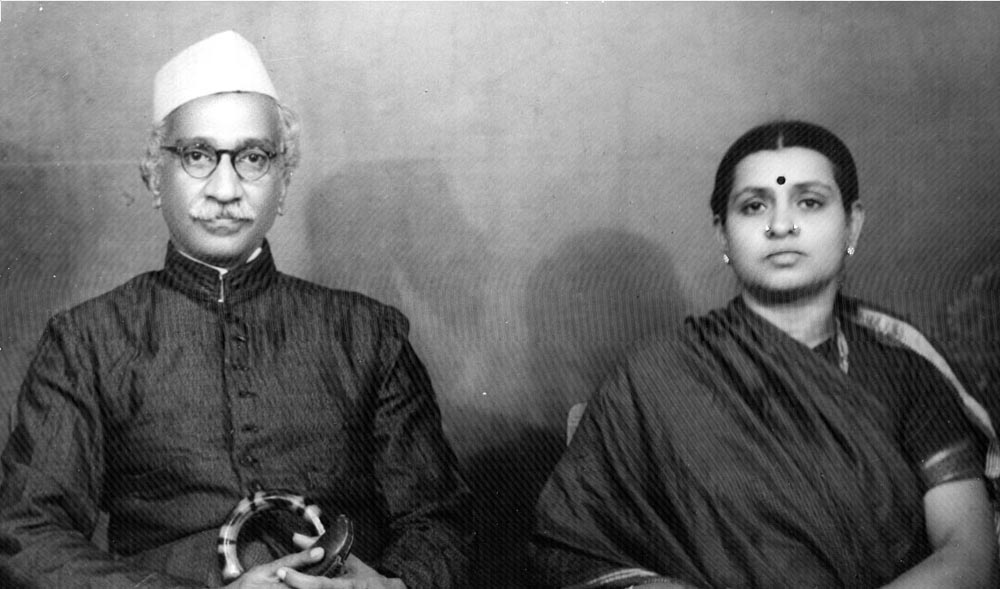 Thaial
and KNS, my parents, were married when the bride had not yet attained
teenage, as was the custom in 1920's. They were a loving couple,
deeply caring for each other. Ever steeped in the world of poetry
and literature, KNS left the major responsibility of running the
home to my mother. Though she had no formal education, she was a
keen reader of Tamil. My father discussed much of his work with
her and highly regarded her opinion. She disciplined her daughters
in their musical training; India Devi became an accomplished vocalist
and violinist and gave regular public performances in temples and
music sabhas.
Thaial
and KNS, my parents, were married when the bride had not yet attained
teenage, as was the custom in 1920's. They were a loving couple,
deeply caring for each other. Ever steeped in the world of poetry
and literature, KNS left the major responsibility of running the
home to my mother. Though she had no formal education, she was a
keen reader of Tamil. My father discussed much of his work with
her and highly regarded her opinion. She disciplined her daughters
in their musical training; India Devi became an accomplished vocalist
and violinist and gave regular public performances in temples and
music sabhas.